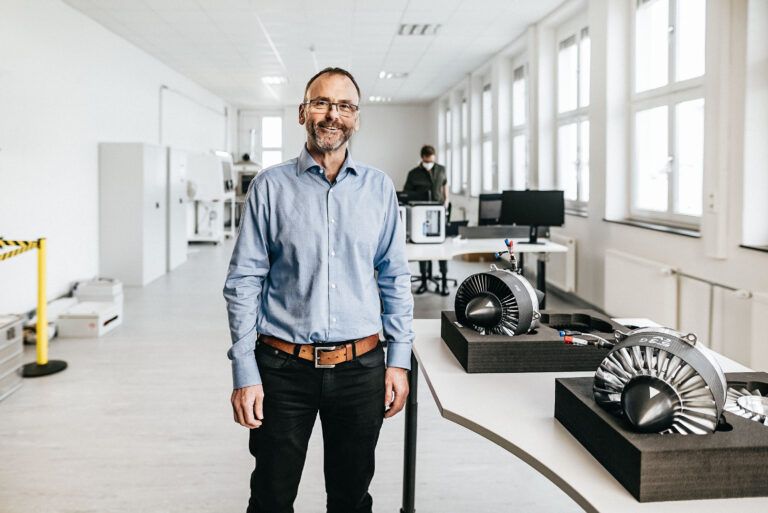Alastair McIntosh, chief technology officer of Lilium discusses the firm’s approach to flight and certification testing of its eVTOL.
What’s your background?
I have a mechanical engineering background and was with Rolls-Royce for 33 years. I went up the engineering ranks there and was chief engineer for the engines on the Gulfstream G650 and the Airbus A350. Latterly I ran the Rolls-Royce engineering team in Germany – about 1600 engineers. I joined Lilium at the end of 2020.
What attracted you to Lilium?
The more I looked into it, the more I was impressed. I was also attracted to the challenges involved – the aircraft itself, the potential market, the unsettled nature of the regulations.
Why did Lilium choose ducted fans for propulsion?
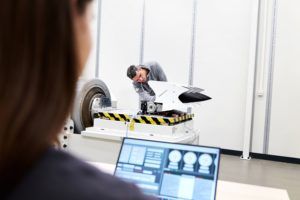
Noise was one of the most important considerations when the aircraft was first conceived. Having a low noise footprint is important for the environment and to get access to cities. Simply, ducted fans contain noise much better than open rotors. They are also good for aerodynamics. And should you have a blade failure – which is quite unlikely – you can contain it.
Is distributed propulsion a challenge?
With our distributed propulsion arrangement we are providing the thrust and the vectoring together. Having distributed propulsion on the trailing edges of the wing and canard minimizes the number of moving parts. The only parts that move on the aircraft are the flaps which the ducted fans are housed within. This also minimizes the overall part count.
What many people don’t realize is that the upper surface of the nacelles are part of the lifting surface. Another aspect of the design that is an advantage is that the carriage is all fixed, so there is no need for hydraulics or electric actuators because there’s also no ailerons or vertical fin.
It’s a really thought through design. The aircraft is quite aerodynamically stable the way the arrangements have been done. Our recent move to 30 engines for aerodynamic balance shows this.
Where are you in the development program?
We have just gone through PDR (preliminary design review) and the critical design review will be during the first half of next year. During PDR we saw some opportunities to improve the design further. We optimized the number of engines and shortened the aircraft without compromising on cabin size.
In the earlier iterations we had a trunk / boot at the back. That took up a lot of space and required a door. By compressing the space and putting the air conditioning unit and some of the avionics in there we have been able to free up space elsewhere. There is not a cubic centimeter in the aircraft that hasn’t had its usage considered and maximized in relation to the design.
How do these design tweaks relate to testing and simulation?
 Testing is at the heart of everything we do. When I joined Lilium there was an expectation that a lot could be done by CFD and analysis alone. The company had done a fair amount of noise and structural testing, but the aerodynamics hadn’t been tested as much.
Testing is at the heart of everything we do. When I joined Lilium there was an expectation that a lot could be done by CFD and analysis alone. The company had done a fair amount of noise and structural testing, but the aerodynamics hadn’t been tested as much.
Now we’ve done a lot more wind tunnel testing – three campaigns. We’ve also just completed an icing campaign with GKN in its tunnel in the UK. The nature of these tests means they have to be done externally.
The other activity we’ve been doing is battery testing and thermal runaways. We do some testing inhouse. We work with suppliers and partners, particularly on things like batteries, but we also recognize that the battery market is dominated by the automotive sector. Having our inhouse battery testing capability gives us more flexibility and allows us to iterate quickly and learn fast, so we therefore further extended out
inhouse capability.
Where does the technology demonstrator fit in?
Phoenix 2 exists to help validate our models and the wind tunnel testing. Moving from the clear analytical work done in the controlled environment of a wind tunnel into the real world can expose problems. What’s great is that we are seeing a good correlation between our pre-test predictions and our post-test analysis. I thought the guys were fixing the results the match was so close!
Are you happy with progress so far?
Yes. We are being mature about what it takes to do this, understand the amount of work and effort required and believe that 2025 to market is a reasonable time.
We’ve been working with the regulators to understand the regulations and the means of compliance. Once you know the means of compliance, you can make your certification testing plan. That plan informs what facilities and equipment you need to generate the data to show compliance to the regulators. That is a closed loop of activity and we are at a good stage with it.
We’ve passed two DOA audits so far with EASA and anticipate four in total. The third is scheduled for before the end of the year and the fourth for next year. That one could run in parallel with certification, but we’re bringing it forward, with some encouragement from EASA.
How much has working with EASA influenced the testing program?
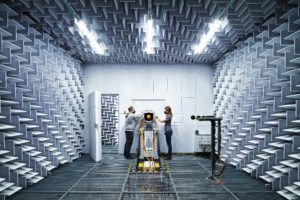 A lot. It is a two way conversation with regulators, but ultimately we have to satisfy ourselves about our approach. Secondly, we must be able to talk confidently with EASA about what needs to be done and why.
A lot. It is a two way conversation with regulators, but ultimately we have to satisfy ourselves about our approach. Secondly, we must be able to talk confidently with EASA about what needs to be done and why.
There are still some areas of debate, such as the EUROCAE area with thermal runaway of battery packs. It’s not 100% clear yet what the requirements will be and how we will prove it. The aircraft we are flying has been tested for thermal runaway, so we are in a good place for that. That experience also helps inform EASA about what makes successful regulation.
How did it feel to achieve transition with Phoenix 2?
It was superb. We have a large team and to all of them the most important thing was putting this aircraft through a transition from vertical to horizontal flight. Confidence was high, but until you do it you’re not 100% sure. So there were massive celebrations.
Transition is the trickiest part. To achieve that milestone with such confidence and have the aircraft behave in such a perfect way was great. The team are super pumped.
What’s the next milestone?
Now we have done transition on the main wing the canard will come next. That will come on at about 100 knots, so we are just incrementally increasing forward speed. Once we have full transition we will be looking at handling qualities and expanding the flight envelope. It’s all about collecting data, bringing that back into our modeling and then using the models to inform what we want to do for our production and certification aircraft.
We did a lot in hover in the early part of the program. We had to ensure there is no modal responses on the airframe, that there is nothing interacting between the airflow and the structure. Once you build confidence you can move away from hover and into forward speed.
Is the limited capacity of batteries an issue?
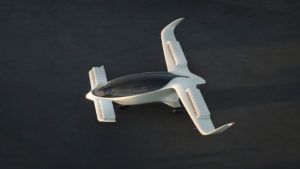 The nature of our flight testing program is different from an A350, where you can expect to be flying for many hours during the same mission. There are special challenges because it is a battery-powered aircraft. You just have to account for it in planning. We anticipate we will be using six aircraft during our certification program to build up hours. But it won’t be like a commercial airliner test program.
The nature of our flight testing program is different from an A350, where you can expect to be flying for many hours during the same mission. There are special challenges because it is a battery-powered aircraft. You just have to account for it in planning. We anticipate we will be using six aircraft during our certification program to build up hours. But it won’t be like a commercial airliner test program.
How will that impact staffing levels?
We have several test pilots. One of the other reasons we are testing in Spain is to train the team. We have simulators we built inhouse, which the pilots use before they fly the aircraft, starting with hover then flying a mission. The aim is to build a team that we can deploy straight into certification. We are at about 40 people now in Spain, and we have a rota system with Germany.
Do you have problems recruiting?
No, there are a lot of people knocking on our door. There are some specific skills which are difficult to find, the ones which everyone finds difficult to source. Moving to Spain has been good for the flight test team. Moving forward there will be flight testing in Germany when we go through certification, but the Spanish operation will also expand.
What’s the pace of the flight testing program currently?
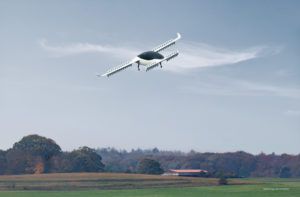 We can do about five flights a week. We do maintenance between every flight and for different profiles. We are also looking at things to do with hover, in-ground
We can do about five flights a week. We do maintenance between every flight and for different profiles. We are also looking at things to do with hover, in-ground
effects, down wash effects. Some flights are repeats, some are pilot training missions and some are pushing the envelope.
The aircraft is unmanned and it is using an early generation of batteries. But they are fit for purpose and are allowing us to achieve transition and high speeds.
Do you foresee any major challenges with the program?
Transition was a key moment. There is always a nagging doubt when you look at the history of VTOL – the Harrier, the Osprey the AW609 are all examples where it became challenging. So it’s great we achieved that.
In terms of flight control laws, we are in good shape. We were curious about the interaction engine to engine, but we are seeing good behaviour even when we simulate an engine failure. Some of the learnings there are helping what we do with our production and certification.
I see our main challenge as the pace at which we have to move. There is a lot to do. As we focus on certification and bring the means of compliance and the test data together we must have the right tools, testing rigs and facilities available. That becomes more of a logistical challenge than anything else.
Some of it we can do inhouse, some of it we will do externally, because of capacity and because we know an external organiation can do something better than we can do it.


